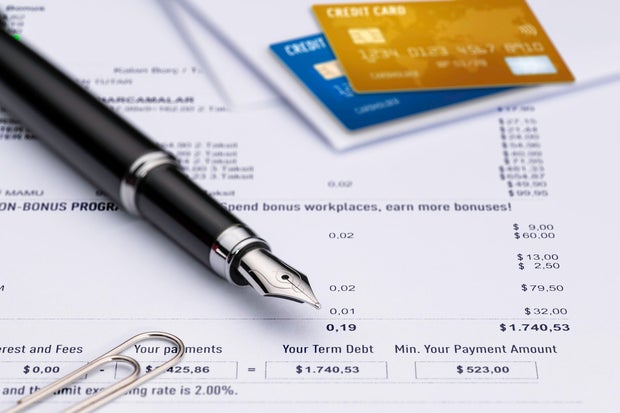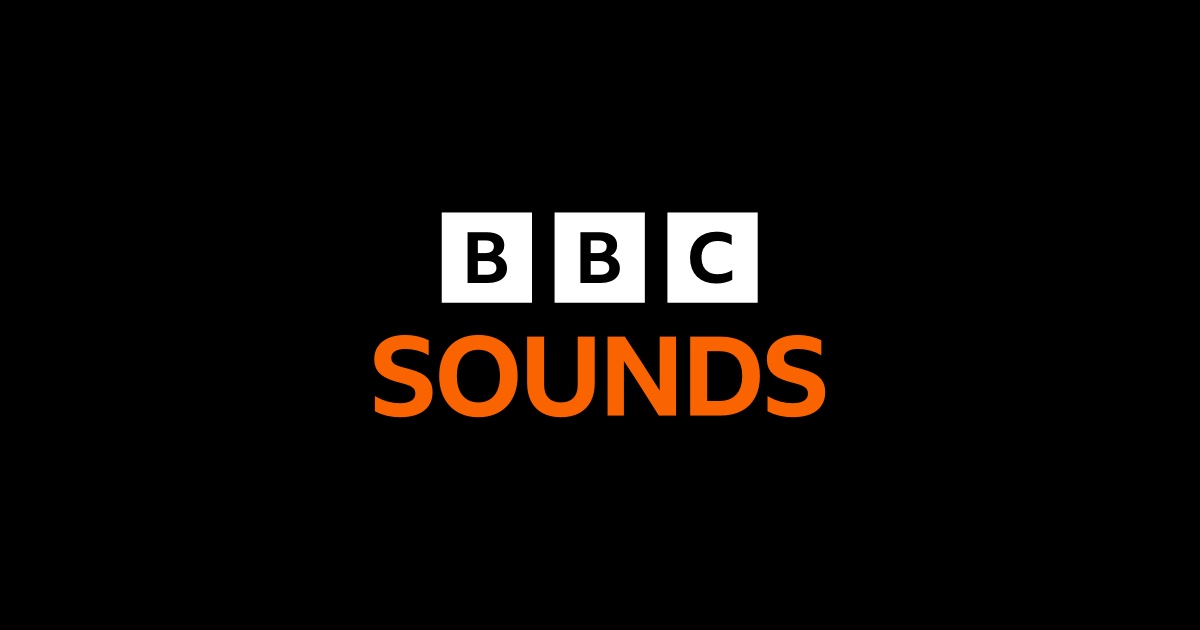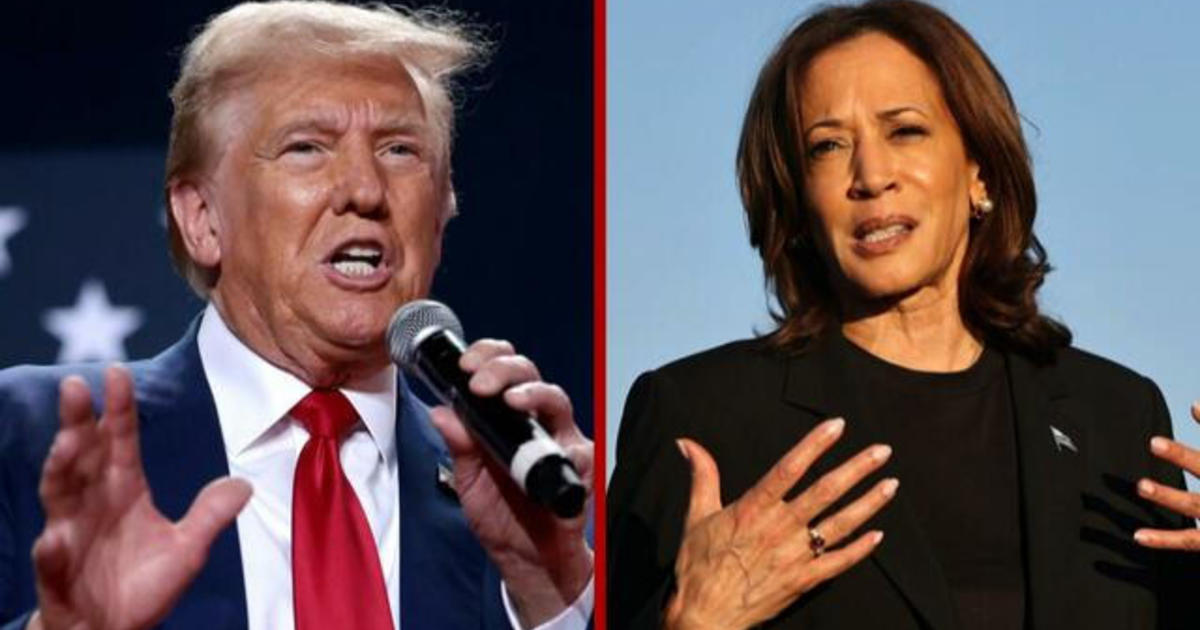 Your minimum credit card payment might seem manageable now, but it could keep you in debt for decades.
Getty Images/iStockphoto
Your minimum credit card payment might seem manageable now, but it could keep you in debt for decades.
Getty Images/iStockphoto
That little number at the bottom of your credit card statement — the minimum payment due — has a way of looking deceptively affordable. For example, if you're staring down a $10,000 balance that you can't pay off and the statement says you only need to pay a few hundred dollars this month, it can feel like you've been offered real relief from an otherwise hefty debt. By making just the minimum payment, you can keep your credit card account in good standing, avoid late fees and still have money left over for groceries, rent or that unexpected car repair.
But here's what many people don't realize: Taking that route is the financial equivalent of kicking the can down the road, especially when you consider that credit card rates are averaging 22.25% currently (for accounts assessed interest). Credit card companies aren't doing you a favor by offering these low minimum payments. That seemingly small required monthly payment is actually carefully engineered to keep you in debt for as long as possible, and at today's average rates, it will barely make a dent in what you owe on your balance.
When you pay just the minimum, you're mostly covering interest and only slightly reducing the principal — yet millions of Americans still do it every month. That's why understanding how minimum payments work, and how much they could cost you at today's rates, is critical if you're carrying a $10,000 credit card balance.
Find out how you can start tackling your overwhelming credit card debt now.
What is the minimum payment on a $10,000 credit card balance at today's rates?
Credit card issuers don't all use the same formula for calculating minimum payments, but most card issuers follow a few standard approaches. Typically, your minimum payment is determined by taking whichever is greater: a fixed percentage of your balance plus any interest and fees, or a flat dollar amount (usually $25 to $35).
The percentage method is where things get interesting. Some issuers calculate your minimum as a percentage of the principal balance — commonly 1%, 2% or 3% — plus 100% of the associated interest and fees. Others might use a simpler approach with just a straight percentage of your total balance.
So, what does all of this mean for a $10,000 balance at today's average rate of 22.25%? Here's how different calculation methods would affect your minimum payment (note, though, that most of these minimum payments would change over time as you chip away at the balance):
- Interest-only minimum payment: Your monthly credit card payment would start at $183.33. It's worth noting, though, that this is rare and would mean your balance never decreases.
- A minimum payment of 1% of balance + interest: Your monthly payment would start at $283.33 ($100 toward principal plus $183.33 in interest).
- A minimum payment of 2% of balance + interest: Your monthly payment would start at $383.33 ($200 toward principal plus $183.33 in interest).
- A minimum payment of 3% of balance + interest: Your monthly payment would start at $483.33 ($300 toward principal plus $183.33 in interest).
As illustrated above, even with the more generous formulas, the majority of your minimum payment is still servicing interest rather than reducing what you actually owe. For example, with the 1% calculation — one of the most common — you're only chipping away $100 from your $10,000 balance each month, assuming you don't add any new charges in the interim.
Explore the credit card debt relief options available to you today.
Why you should make more than the minimum payments on your credit cards
Here's the brutal math: If you only make minimum payments on that $10,000 balance, you could be paying it off for years or even decades, depending on your card's formula. The total interest paid over that time could easily exceed your original balance, too — especially if the variable rates on credit cards continue to climb over time.
Beyond the astronomical interest costs, sticking to minimum payments generally keeps your credit utilization ratio dangerously high. And, this ratio, which is the percentage of your available credit that you're using, significantly impacts your financial health. A maxed-out card, or even one that's 50% utilized, can drag down your credit score and make it harder to get favorable rates on mortgages, auto loans, or other credit cards.
Perhaps most concerning, though, is that minimum payments create a false sense of financial stability. By making them, you're technically current on your account, but you're not making real progress on paying off the debt. The interest charges are simply compounding each day, making it more difficult to get your debt under control.
If you can only afford to pay the minimum, it makes a lot of sense to consider one of your debt relief options, like credit card debt forgiveness or debt consolidation, instead. Taking the debt relief route can make it more affordable to get rid of your debt and may expedite the repayment process substantially, depending on which strategy you use.
The bottom line
Minimum payments are designed to benefit credit card companies, not cardholders. They're the bare minimum to keep your account from going delinquent — nothing more. The solution to that problem is straightforward, but it's not always easy: Pay as much as you possibly can above the minimum. Even an extra $50 or $100 per month can dramatically reduce your payoff timeline and save thousands in interest. If you're serious about breaking free, your minimum payment should be viewed as exactly what it is: the absolute floor, not a payment plan.
Angelica Leicht is the senior editor for the Managing Your Money section for CBSNews.com, where she writes and edits articles on a range of personal finance topics. Angelica previously held editing roles at The Simple Dollar, Interest, HousingWire and other financial publications.


















































